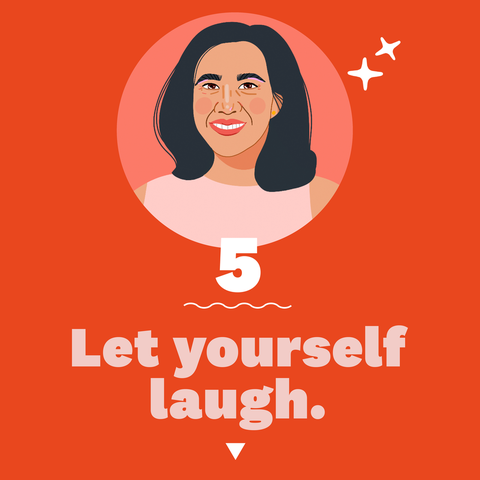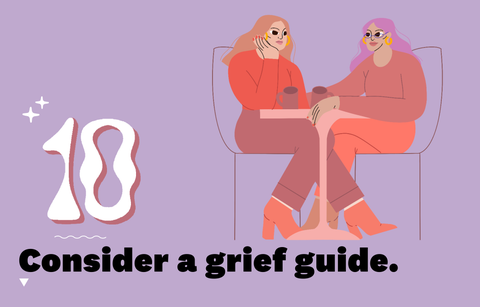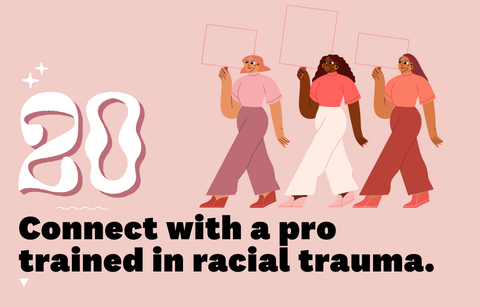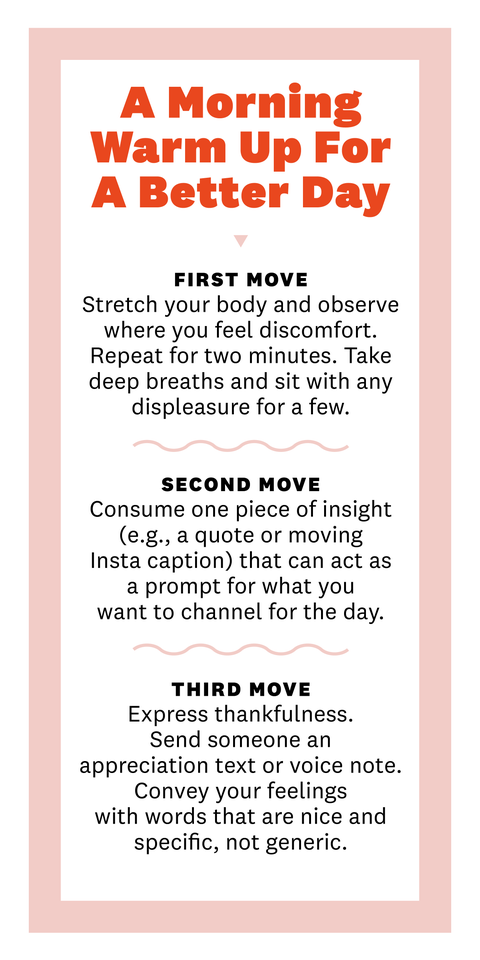
The coping manual to help you survive and thrive through any emotional disaster (as well as the small stuff you still sweat)…and crush it every step of the way.
By The Editors of Women’s Health
How are you? Seriously, check in with yourself. What was the answer? “Fine”? “Not great, but I don’t want to complain because people have it worse”? “Ready to blast off to space”? It’s no secret that 2020 has felt like an active volcano, in which spewing news cycles are followed by simmering states of despair.
Now for the good: There’s a ton of actions you can take to Keep. Moving. Forward. So fantasize for a minute here. If you want to learn to play tennis, you’d (in an alternate universe) call Serena Williams. Biz advice? You might go to Sheryl Sandberg. But for a heavy mental health and attitude overhaul, you gotta go to the top stars of the mind. These powerhouses—we’re talking psychologists, mindfulness gurus, and more—own the type of resilience, hopefulness, and grit we need.
You can reignite your happiness and see this world for the beautiful place it can be. So the next time you’re asked, “How are you?” the fitting response will be, “Amazing.”

Slate a worry break.
“Schedule time in your calendar to feel bad and overwhelmed and all of those things,” says Emily Anhalt, PsyD, psychologist and emotional fitness consultant. “That frees up your mind the rest of the time to experience the good vibes coming your way.”

Think of one good happening from your day before bed.
“It’s a trick I learned from [happiness expert] Shawn Achor that’s stuck—two minutes is maintainable,” says Dan Harris, ABC News anchor and cofounder of 10 Percent Happier. Try it, and channeling positivity and gratitude daily will become routine.

Ditch downer thoughts.
Or just get sharper at recognizing and reframing them. This will “declutter your mind so it becomes a room you want to spend time in,” says Jay Shetty, author of Think Like a Monk: Train Your Mind for Peace and Purpose Every Day. Spot the thought patterns you don’t like (I’m lonely); stop and reflect (This extra alone time doesn’t have to mean I’m isolated and distant; it can be synonymous with strength and reflection); swap and upgrade your thinking (This is a period of solitude, and I’ll come out of it better able to engage).

Quit the comparison game.
Reminder: Pain is not a competition. “We become afraid to talk about losses that feel less significant compared with those of others—we tell ourselves we should just be grateful,” says psychotherapist Lori Gottlieb, author of Maybe You Should Talk to Someone. But when you ignore your hurt? “It will come out in other ways, like short-temperedness, too much time on the Internet—whatever numbs the feeling.” The fix: Have the type of grace for yourself that you’d have for a bud. “If a friend said to you, ‘I really miss going to my exercise class,’ you would hear and comfort her. We need to respond with that same compassion for ourselves.” It’ll feel good, trust.

“Many coping mechanisms are perfectly healthy,” says Angela Duckworth, PhD, psychologist behind Grit: The Power of Passion and Perseverance—including humor. “So it’s okay to acknowledge your situation and watch the funny TV show,” she says.

Take a recess.
Play is an undervalued pillar of emotional fitness, Anhalt says. The definition: Play is all about a meeting of the minds and letting yourself think outside of what feels possible or logical—as in brainstorms or word games with friends.

Build your discomfort resilience.
Instead of, say, never getting on a plane again post-pandemic, change the narrative by closing your eyes and letting your ideal scenario play out (a technique called visualization). Make the imagery as evocative as possible (your travel is smooth, masks are still everywhere, you’re six feet apart from other flyers). Why it works: Picturing yourself taking an action activates the same regions of the brain as performing it IRL, explains Terri Bacow, PhD, a clinical instructor at Icahn School of Medicine at Mount Sinai in New York City. Our brains often perceive things we imagine as being equivalent to real memories. So envision it, then jump right in.

Go to your safe space.
Life feeling out of control? “Think about a place in time where you felt comfortable and relaxed, and float yourself back there,” says trauma specialist Laurie Nadel, PhD. That could be a vacation spot, your garden, or even a favorite chair. Hang out for a few minutes to restore a sense of security. You can do this multiple times a day.

Follow positive thought leaders.
“I basically save every post from the Instagram feed of Diego Perez (@yung_pueblo), a meditation teacher and poet who often writes about resiliency.” —Jordan Galloway, WH fitness director

There’s power in hashing out a loss with that special person who’s been through a hardship similar to yours. A sense of social connectedness is the top predictor of how a person deals with a loss, says Laura Goorin, PhD, a clinical psychologist in Manhattan. And while any bond is worthwhile, Goorin confirms that having like-minded friends can be especially potent: “It’s powerful to have peers going through exactly the same thing,” she says.

Repeat a mantra.
Try “Easy does it” and “Go toward the love,” says Mandy Ingber, yoga and mindfulness guru to the stars (we’re talking Jen A and Kate Beckinsale).

Surrender to the moment.
Ingber also suggests asking yourself: “Where am I now physically? What can I feel? The breeze on my skin?” This way, you don’t stew in the “life was better when…” state.

Consume a piece of daily inspo.
“The book Journey to the Heart by Melodie Beattie has a quick passage for every day of the year. It’s comforting and grounding.” —Lauren Del Turco, WH fitness and wellness editor

Change your view of the present.
If you’ve lost any crucial parts of your identity—whether that comes from an injury, a job loss, the end of a relationship, a move—consider other positives of the current moment. “It may not be the year for making money, but it may be the year for your meditation practice or your creativity,” says Ingber. When you try this, “it shows you that you are none of these things you thought defined you.”

Kaitlan Collins, the 28-year-old CNN White House Correspondent, is up at 6 a.m. daily on email, then hustles to the White House to pursue stories, do TV hits, or sit for briefings in the West Wing—sometimes going all-out until 2 a.m. How she keeps her brain firing on all cylinders through the chaos: “I make time to check in with friends and call my nana every single day,” Collins says. “I also read something that helps me escape, and lately that’s been Sally Rooney novels.”

Create a self-esteem file.
When someone gives you positive feedback, or you’re proud of yourself, add it to a Word doc or journal. “It’s compelling to see this amazing data center of proof that you are good, valuable, and making a difference,” says Anhalt. Open it in moments of self-doubt or defeat.

Engage at your capacity.
With so many important causes to focus on at any given time (supporting essential workers during COVID-19, showing up and taking action for the Black Lives Matter movement), do what you can handle in that moment to show support a cause to avoid burnout. (Reminder: Making sure you have the emotional reserves that allow you to show up is as important as the work itself.) Need a break? Take a day and write about or sit with your feelings, Yolo Akili Robinson, founder and executive director of BEAM (Black Emotional and Mental Health Collective), previously told WH.

Have some self-love.
When work or current events become draining, “I remind myself that whatever’s going on will pass,” Collins says. “I’m going to go back to work and life the next day and have all new questions and experiences.”

Repeat this quote to help quell anxiety:
“Trust future you to handle future problems.” In other words, whatever happens in the future will be handled…then, says Anhalt. No use worrying about it now.

For Black Americans, it can be especially helpful to work with a mental health expert with this expertise while standing up against social injustice and systemic racism (and always). Use the Therapy For Black Girls online database to find therapists in your area who meet your needs and insurance.



Take a breather for joy.
“The warmth of Samin Nosrat and gentle intelligence of Hrishi Hirway on the Home Cooking podcast are just what I need. It’s all about food and full of laughter and kindness.” —Laura McLaughlin, WH deputy managing editor

Reignite your passion.
“I think people are happiest when they are in pursuit of a meaningful goal. When we lose that sensation, we feel purposeless and not useful,” says Duckworth. Her pro advice: Think back to endeavors you felt great doing, and ask yourself why. “Did you love working with your hands? Or the sense of teamwork? Then find a different way to the same end.”

Don’t skimp on self-care.
There’s no such thing as overdosing on self-compassion, Duckworth says. “In fact, when people feel cared for, that’s when they take care of other people,” she explains. “You’ve heard it before, but it’s so true: You can’t give and make a difference if your cup is empty.”

Implement a moving meditation.
“When I first started my job, I was constantly worrying, What’s on Twitter? Who’s calling me?” Collins says. “A workout is the time when I vow not to check phone alerts. Her fitness tool of choice is The Mirror. “It’s something I can use at home easily.”

When Chelsea Jackson Roberts, PhD, the newest yoga and meditation instructor to join the Peloton team, needs to regroup amid the noise, she pauses and places stacked hands on her chest over her heart. She takes a deep inhale and exhale and feels her heartbeat. “I acknowledge that I still have my breath and remember that breath and movement bring people together,” she says. “This simple grounding exercise helps push you on to another day.

Send good vibes.
Bring to mind someone you’re indifferent to (i.e., a security guard at your kid’s school), or maybe someone you take for granted. You may not even know their name. Wish them well in your head with a series of phrases (May you be safe, happy, and healthy…), kind of like a greeting card you’re not actually sending. This practice, called Loving Kindness, is designed to help us pay attention differently, says Sharon Salzberg, a teacher of Buddhist meditation and author of Real Change: Mindfulness to Heal Ourselves and the World. “You don’t have to force a special feeling,” she says. “You’ll notice more awareness and connection, like when you see that person again.” Doing this technique regularly can dial up love for yourself and others.

Give yourself T.I.M.E.
Use the acronym to help you remember the four things you should incorporate into every day to maintain a positive headspace, Shetty recommends: thankfulness, inspiration, meditation, exercise.

Make a don’t-do list.
You don’t need more to stress about today, Nadel points out. “So take one or two things that you don’t really have to do today—like a customer service phone call that will make you have to sit on the phone for 20 minutes—off of your to-do list,” she explains. “Then actively give yourself the instruction not to do it or think about it on a given day when you need a mental break,” she explains. Guess what? You just carved out 20 minutes for self-care—so call a friend or listen to music instead.

Get out in nature.
Expose yourself to the great outdoors every day to reap some mental health benefits—there is a strong body of scientific literature to show that spending time in a green space can have positive effects on your mental well-being. Harris lives by this rule daily: “I really made it a huge priority to walk in Central Park pretty much every day,” he says. “Even if I’m doing a phone call, I try to do it while walking through the park if I can.”

“The trick I use to get over professional setbacks–like an injury or losing a race—is the same one I use when I lose in some way in my personal life. I give myself a time frame of 48 hours to feel all the feelings. After that, I ask myself, What can I take from this, and how can I adjust, adapt, and get better? Overcoming a setback gives me a boost of confidence that there’s more room for growth in the next opportunity.” —Desiree Linden, professional distance runner and Brooks Running athlete

Replace normal with now.
You’ve heard the term “new normal” over and over—but Nadel recommends thinking of a rough period (like the pandemic) as your “new now” instead. “This isn’t normal—and we shouldn’t expect that it’s normal,” she says. “Telling yourself you have to fully accept this as your new status quo causes you to live in fear and anger—a toxic cocktail.” On the flip side, if you think of this time as the new now, you become more accepting that circumstances are ever-changing and not permanent.






